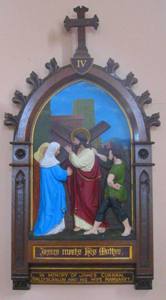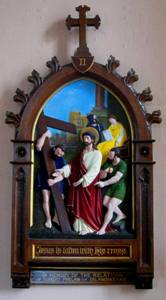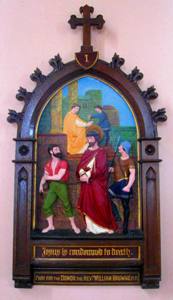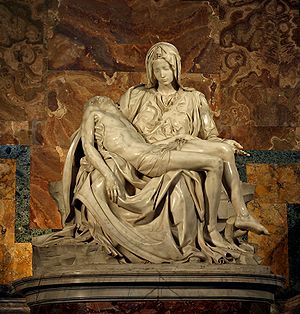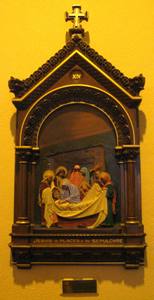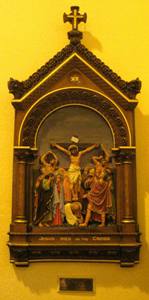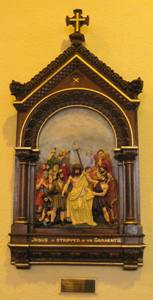The Thirteenth Station
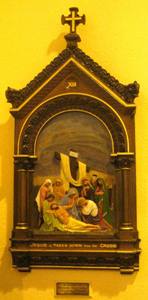
Jesus Is Taken Down From The Cross
Crucifixion was usually a slow, lingering death. When necessary, to hasten death, a victim’s legs were broken and then suffocation quickly ensued. The dead victim was left to rot on the cross unless the body was claimed by a relative. –
“Since it was the day of Preparation, and so that the bodies would not remain on the cross on the Sabbath (for that Sabbath was a high day), the Jews asked Pilate that their legs might be broken and that they might be taken away. So the soldiers came and broke the legs of the first, and of the other who had been crucified with him. But when they came to Jesus and saw that he was already dead, they did not break his legs. But one of the soldiers pierced his side with a spear, and at once there came out blood and water”. [John 19:31-34].
In the tableau we can see clearly the wound in Jesus’ side caused by the spear. Traditionally, it is his right side.
The two men are Joseph of Arimathea and Nicodemus –
“After these things Joseph of Arimathea, who was a disciple of Jesus, but secretly for fear of the Jews, asked Pilate that he might take away the body of Jesus, and Pilate gave him permission. So he came and took away his body”. [John 19:38]. Only John’s gospel mentions Nicodemus.
The mother of Jesus clasps his left hand while the beloved disciple supports his head. Three other women are present. –
“There were also many women there, looking on from a distance, who had followed Jesus from Galilee, ministering to him, among whom were Mary Magdalene and Mary the mother of James and Joseph and the mother of the sons of Zebedee”. [Matthew 27:55-56].
The dedication on the brass plate below the tableau is:
IN MEMORY OF
DECEASED RELATIVES OF
JOHN AND ELLIE MURPHY,
BALLYPHILIP. |

